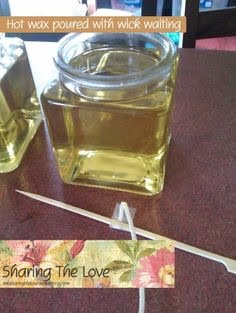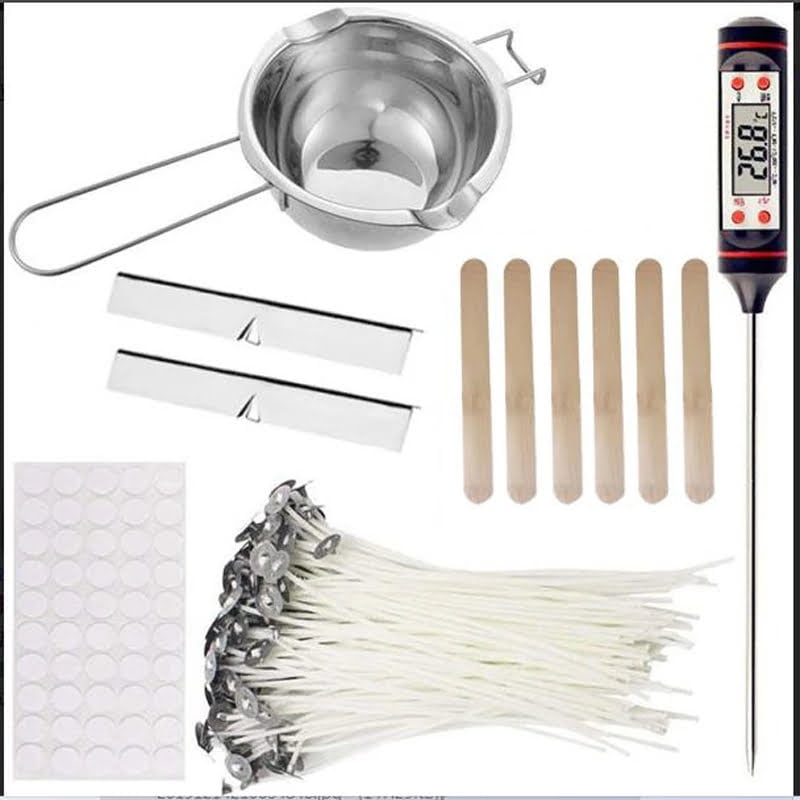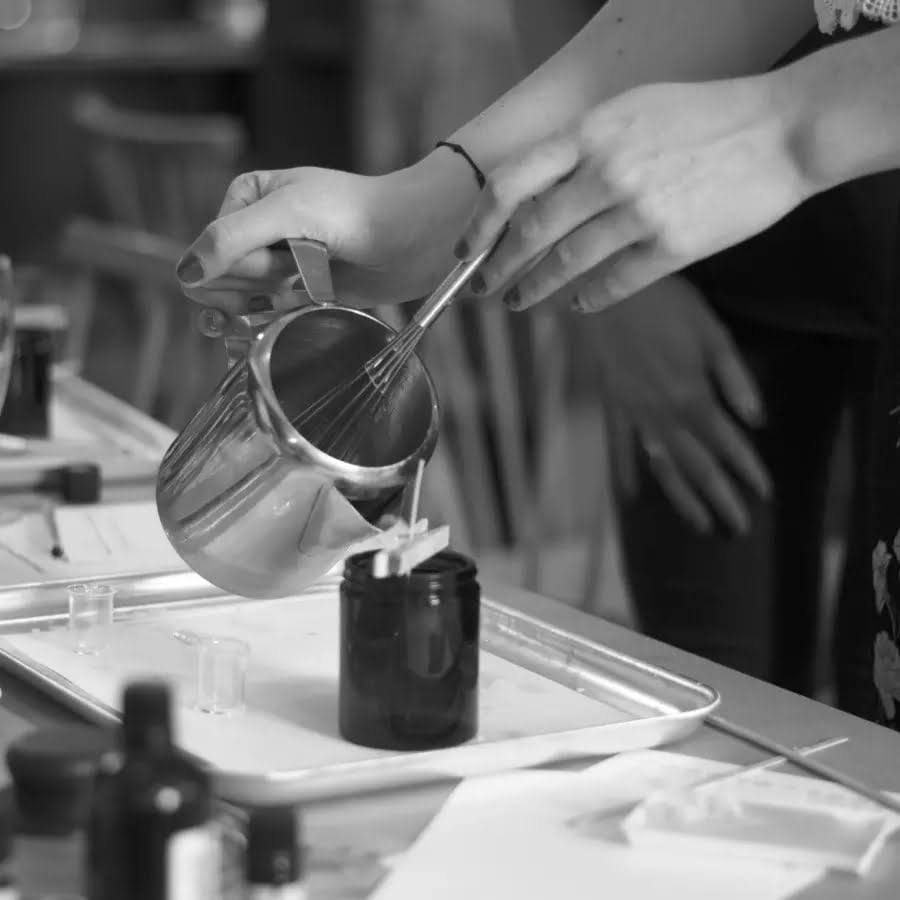Temperature control plays a crucial role in the art of candle making, as accurate temperature readings are necessary for successful results. Being able to measure and maintain the right temperatures throughout the different stages of candle making is vital to ensure proper consistency and performance of the final product. This leads us to the main question: Can I Use a Meat Thermometer for Candle Making?
Before we delve into whether a meat thermometer can be effectively used in candle making, it is important to understand what exactly a meat thermometer is and how it is typically used. A meat thermometer is a kitchen tool specifically designed to measure the internal temperature of cooked meats. It comes in various types, such as analog dial thermometers and digital thermometers, each with their own features and design.
In candle making, specific temperature requirements have to be met at different stages – from melting wax to adding fragrances and pouring. Precision in temperature measurements ensures that candles achieve their desired attributes, such as optimal fragrance throw and even burn. However, using inaccurate thermometers or having poor temperature control can present challenges in obtaining consistent results. Therefore, exploring whether a meat thermometer can serve this purpose becomes increasingly relevant.
As we progress through this article, we will not only compare meat thermometers with specialized candle making thermometers but also discuss the differences between cooking and candle making temperatures. By understanding these distinctions, we will uncover potential risks and limitations associated with using meat thermometers for candle making. Additionally, alternative tools suited for measuring temperatures in candle making will be explored as well.
What is a Meat Thermometer?
A meat thermometer is a kitchen tool used to measure the internal temperature of cooked meat. This is important for food safety as it ensures that the meat has reached a safe minimum temperature to kill any bacteria or parasites that may be present. Meat thermometers come in various types, including instant-read thermometers and oven-safe thermometers.
Types of Meat Thermometers
There are different types of meat thermometers available on the market. The most common type is an instant-read thermometer, which is inserted into the thickest part of the meat to quickly provide an accurate temperature reading. These thermometers usually have a metal probe, a digital display, and can give results within seconds.
Another type of meat thermometer is an oven-safe thermometer. These thermometers are designed to be left in the meat while it cooks and can withstand high temperatures without getting damaged. They often have a dial or analogue display and need some time to reach an accurate reading.
Features and Design
Meat thermometers typically consist of a metal probe, which is inserted into the meat, and a display unit that shows the temperature reading. Some thermometers have additional features such as preset temperature alarms or timers to help users achieve their desired cooking result. The probe may also be detachable for easy cleaning or storage.
The design of a typical meat thermometer focuses on functionality and durability. They are designed to withstand high temperatures often required in cooking processes without compromising accuracy. Many models also have ergonomic handles or grips for comfortable use.
While meat thermometers serve their purpose well in cooking applications, their suitability for candle making needs further exploration due to differences in temperature requirements and potential risks associated with using them outside their intended use.
Temperature Requirements in Candle Making
In candle making, maintaining the right temperature is essential for achieving successful results. Different stages of the candle making process require specific temperature ranges to ensure proper wax melting, fragrance incorporation, and pouring. Precise temperature control is crucial for achieving the desired consistency and performance of candles. This section will delve into the specific temperature requirements in candle making and discuss the challenges that arise from using inaccurate thermometers or poor temperature control.
Specific Temperature Requirements
To begin with, it is important to understand the specific temperature requirements at each stage of candle making. When melting wax, it is typically recommended to use a double boiler system with the water bath reaching around 180°F (82°C). This allows for gradual and even heating of the wax, preventing overheating or scorching. Adding fragrances or dyes usually requires temperatures between 150°F (65°C) and 175°F (79°C) to ensure proper incorporation without altering their properties.
During pouring, most waxes need to be poured at temperatures between 125°F (52°C) and 145°F (63°C). Pouring at too high temperatures may result in excessive shrinkage or cracking, while pouring at too low temperatures can result in uneven surfaces or fragrance separation. Additionally, each type of wax has its own optimum pouring temperature range that should be followed for ideal results.
Importance of Precise Temperature Measurements
Accurate temperature measurements are vital for achieving consistent results in candle making. Using an incorrect thermometer or relying on unreliable methods can lead to imprecise temperature readings and compromise the quality of your candles. Inaccurate measurements can result in various issues such as improper hardness, poor burn performance, sweating, sinkholes, or uneven distribution of fragrance oils.
Furthermore, factors such as ambient room temperature and humidity levels can also impact how wax sets during cooling. Without precise temperature control, it becomes challenging to meet the specific requirements of different candle making techniques and formulas. As a result, it is crucial to use a thermometer that allows accurate monitoring and adjustment of temperatures throughout the candle making process.
Challenges with Inaccurate Thermometers or Poor Temperature Control
Using a meat thermometer for candle making poses several challenges due to the differences in temperature requirements between cooking and candle making processes. Meat thermometers are primarily designed for measuring lower temperatures typically used in cooking, ranging from 32°F (0°C) to 212°F (100°C). They may not be calibrated to accurately measure the higher temperatures necessary for melting wax or incorporating fragrances.
Relying on a meat thermometer in candle making can lead to inaccurate readings and inadequate temperature management. This can result in inconsistent candle quality, decreased performance, and potential safety hazards. It is essential to utilize specialized thermometers specifically designed for candle making that offer precise temperature measurements within the appropriate range for each stage of the process.
By understanding the specific temperature requirements in candle making and the limitations of using meat thermometers, you can make informed decisions about choosing the right tools and ensuring accurate temperature control throughout your candle making journey.
Differences Between Cooking and Candle Making Temperatures
When it comes to temperature requirements, there are significant differences between the processes of cooking and candle making. While meat thermometers excel at measuring the temperatures required for cooking, they may not be suitable for candle making due to various reasons.
One major difference lies in the temperatures necessary for melting wax. Candle making involves melting wax at much higher temperatures than those typically found in cooking.
Meat thermometers are often calibrated to measure temperatures up to a certain range, usually not exceeding 220 degrees Fahrenheit (104 degrees Celsius). In contrast, candle waxes typically need to be heated to temperatures ranging from 120 degrees Fahrenheit (48.9 degrees Celsius) up to 200 degrees Fahrenheit (93.3 degrees Celsius) or even higher for some specialty waxes.
Using a meat thermometer that is not designed for such high temperatures can pose risks and limitations in candle making. The thermometer may not accurately measure the wax temperature, leading to inconsistencies in the melting process or potentially causing overheating and safety hazards. Furthermore, prolonged exposure of a meat thermometer to high candle-making temperatures could damage its components or affect its accuracy when used later for cooking purposes.
To accommodate the specific temperature requirements of candle making, it is recommended to use specialized thermometers designed explicitly for this craft. Candle making thermometers are built with higher temperature ranges and more accurate readings suited for monitoring different stages of the process – from melting wax, adding fragrance oils or dyes, to pouring into molds. These dedicated tools provide greater precision and control over temperature measurements, ensuring optimal consistency and performance of your candles.
In summary, while meat thermometers serve their purpose well in cooking applications, they may not be suitable or safe for use in candle making due to the higher temperature demands of the latter process. To achieve successful results and maintain safety standards, it is advisable to invest in a dedicated candle making thermometer that meets the specific temperature requirements of this craft. By using the right tools, candle makers can ensure accurate temperature control and create beautiful, high-quality candles.
| Type of Thermometer | Highest Temperature Range |
|---|---|
| Meat Thermometer | Up to 220°F (104°C) |
| Candle Making Thermometer | Ranges from 120°F (48.9°C) up to 200°F (93.3°C) or higher, depending on the wax being used |
Candle Making Thermometers
In candle making, precise temperature control is crucial to ensure the final product’s quality and performance. The different stages of candle making, such as melting the wax, adding fragrance or dye, and pouring the mixture into molds, all require specific temperature ranges for optimal results. To achieve these precise temperature measurements, it is recommended to use a dedicated candle making thermometer rather than a meat thermometer.
A meat thermometer is designed specifically for measuring the internal temperature of cooked meats to ensure they are safe to eat. It typically has a limited temperature range and may not be calibrated to measure higher temperatures required for melting wax in candle making. Using a meat thermometer could lead to inaccurate readings or even damage the thermometer itself if it exceeds its maximum temperature capacity.
On the other hand, specialized candle making thermometers are designed with the unique needs of candle makers in mind. These thermometers come in various types including dial thermometers, digital thermometers, and infrared thermometers. Each type offers distinct features and benefits that cater specifically to the temperature requirements of candle making.
| Meat Thermometer | Candle Making Thermometer |
|---|---|
| Designed for measuring internal temperatures of cooked meats. | Designed specifically for measuring temperatures during various stages of candle making. |
| May have a limited temperature range suitable for cooking but not high enough for melting wax. | Offers higher temperature ranges required for melting wax and other steps in candle making process. |
| Not calibrated for accuracy at high temperatures used in candle making. | Precisely calibrated for accurate temperature readings in candle making. |
| May suffer damage or malfunction when exposed to high temperatures. | Durable and heat-resistant construction ensures reliable performance. |
Comparing Meat Thermometers to Candle Making Thermometers
Meat thermometers and candle making thermometers may seem similar in their function of measuring temperature, but they are designed for different purposes. It is important to understand the differences between these two types of thermometers to determine whether a meat thermometer can be used for candle making.
One significant difference between meat thermometers and candle making thermometers is the temperature range they are able to measure. Meat thermometers are typically designed to measure temperatures up to 200-250 degrees Fahrenheit (93-121 degrees Celsius), which is suitable for cooking meats.
On the other hand, candle making involves melting wax at higher temperatures, usually ranging from 160-200 degrees Fahrenheit (71-93 degrees Celsius) for container candles and up to 230-240 degrees Fahrenheit (110-116 degrees Celsius) for pillar candles. Therefore, using a meat thermometer may not accurately measure the higher temperatures required for melting wax in candle making.
Furthermore, the design and features of meat thermometers may not be ideal for candle making. Meat thermometers are often designed with long probes that are inserted into food to obtain an internal temperature reading.
This design may not be suitable or convenient when working with hot liquid wax or checking the temperature of a melted wax mixture. Candle making thermometers, on the other hand, are specifically designed with features like a shorter probe or clip attachments that allow for easy attachment to containers and precise temperature readings.
Alternatives to Meat Thermometers for Candle Making
When it comes to candle making, having accurate temperature measurements is crucial for achieving successful results. While meat thermometers are commonly used in cooking to monitor the internal temperature of meats, they may not be the most suitable option for candle making. In this section, we will explore alternative tools that can be used for temperature measurement in candle making.
One alternative option for temperature measurement in candle making is a candy thermometer. Similar to meat thermometers, candy thermometers are designed to measure high temperatures accurately. They feature a long probe and a wide temperature range, making them suitable for melting wax and monitoring the temperatures required during various stages of candle making. Candy thermometers often come with handy clips or hooks that can attach to pots or containers, ensuring stability during temperature measurement.
Another option is an infrared thermometer, which allows you to measure the temperature without direct contact. These thermometers work by detecting infrared radiation emitted by objects, providing quick and accurate readings from a distance. This can be particularly useful when measuring the hot wax without risking burns or affecting its consistency through direct contact.
While using alternatives like candy thermometers or infrared thermometers can yield more accurate results in candle making compared to meat thermometers, it’s important to consider their limitations as well. Candy thermometers may not provide as precise measurements as specialized candle making thermometers due to variations in calibration and accuracy. On the other hand, infrared thermometers may only measure surface temperatures accurately and may not penetrate deep into hot wax.
Conclusion
In conclusion, while meat thermometers serve their purpose well in the kitchen, they are not suitable for candle making. Throughout this article, we have learned about the importance of temperature control in candle making and how accurate temperature readings are necessary for successful results. We have also explored the features and design of a typical meat thermometer and discussed the differences between cooking and candle making temperatures.
Using a meat thermometer in candle making can pose several risks and limitations. Meat thermometers may not be calibrated to measure the higher temperatures required for melting wax, which can lead to inaccurate temperature readings. This can affect the consistency and performance of your candles. Additionally, poor temperature control or inaccurate thermometers can result in safety hazards such as overheating or wax fires.
Instead, it is recommended to use specialized candle making thermometers that are specifically designed for this purpose. These thermometers come in various types – dial, digital, infrared – each offering their own advantages and benefits. They are calibrated to measure the temperatures needed for different stages of candle making accurately. Alternatively, other kitchen tools like candy thermometers or infrared thermometers may also be suitable alternatives.
Frequently Asked Questions
Can a meat thermometer be used for oil temp?
A meat thermometer is typically not suitable for measuring the temperature of oil. This is because meat thermometers are designed to measure higher temperatures, usually up to around 200-220 degrees Fahrenheit, while also being sensitive enough to accurately measure lower temperatures commonly found in cooked meats. On the other hand, when it comes to oil temperature for cooking or frying, temperatures can reach much higher levels, often exceeding 400 degrees Fahrenheit.
Using a meat thermometer in such high temperatures may damage the device and potentially lead to inaccurate readings. It is recommended to use a specialized candy or deep-fry thermometer that can withstand the high heat required for oil temperature measurement.
How can you tell the temperature of a candle without a thermometer?
Without a thermometer, there are a few techniques you can use to get an estimate of a candle’s temperature. One method involves observing the behavior of the candle’s flame. When a candle burns at its ideal temperature, the flame should be relatively steady and evenly shaped.
If the flame appears larger and more erratic, it could indicate that the candle is burning at a higher temperature. Similarly, if the flame seems smaller and flickers intensely or struggles to stay lit, it might suggest a lower than optimal temperature burn. These visual cues provide rough estimations but cannot give precise measurements like using a thermometer would.
How thermometer is used in candle making?
Thermometers play an essential role in candle making processes as they help maintain consistent temperatures throughout various stages of production. When melting wax, whether using direct heat or double boiler methods, thermometers are used to monitor and control heating temperatures accurately. Different types of waxes have specific melting points that need to be reached and maintained for optimal results in terms of fragrance throw and overall quality of candles.
By closely monitoring the wax’s temperature with a thermometer during cooling and pouring phases as well, candle makers ensure they pour their wax into molds or containers at appropriate temperatures to achieve proper adhesion with wicks and minimize cooling issues like sinkholes or frosting on finished candles. In summary, thermometers are crucial tools for candle makers to ensure precise temperature control and ultimately produce high-quality candles.

Welcome to my candle making blog! In this blog, I will be sharing my tips and tricks for making candles. I will also be sharing some of my favorite recipes.





